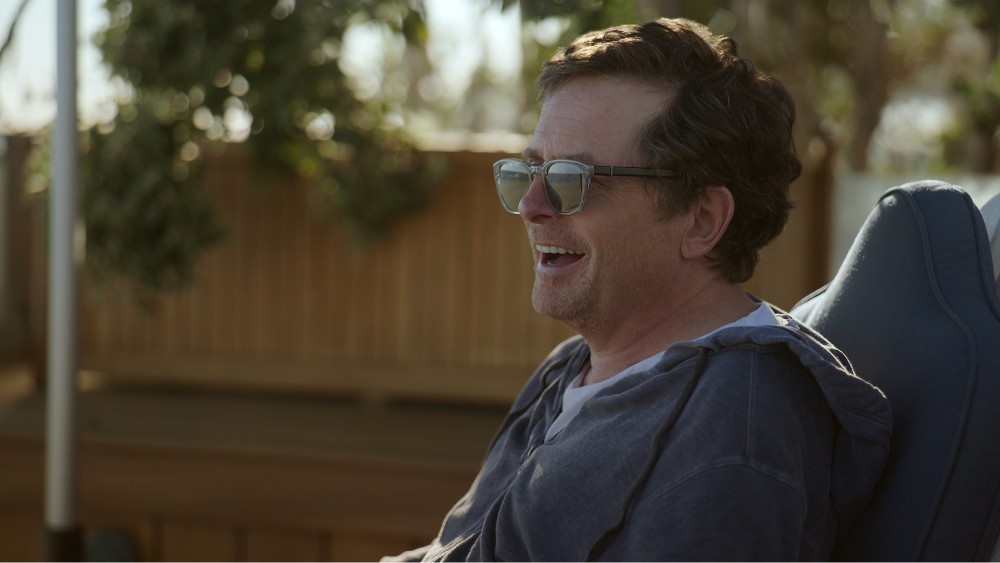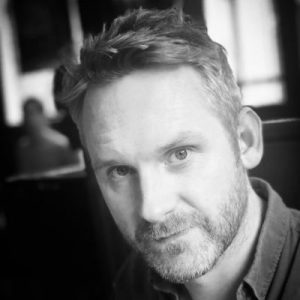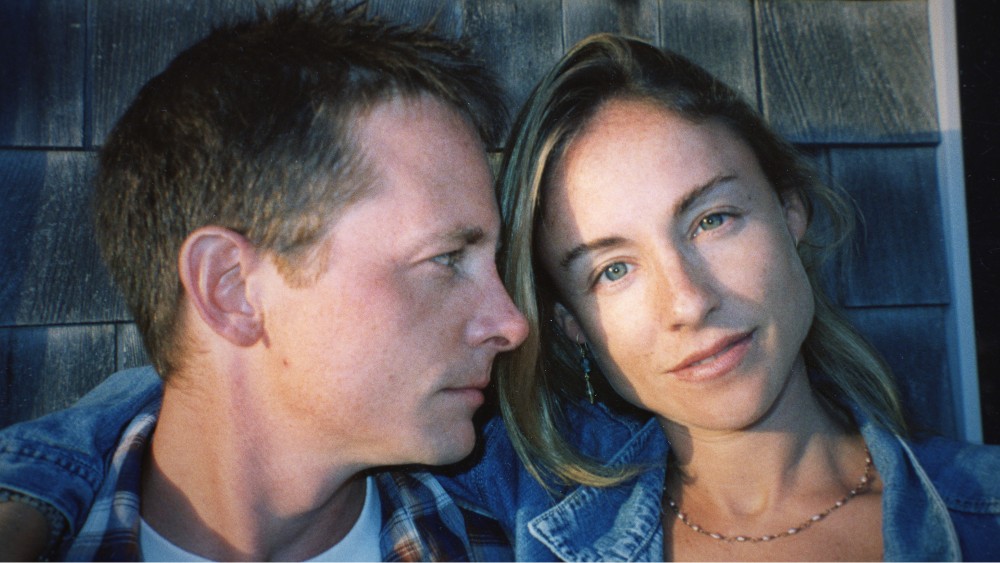
Getting an opportunity to work on a documentary about Michael J. Fox was a dream come true for Editor Michael Harte.
Harte is now nominated for an Emmy for his work on STILL: A Michael J. Fox Movie. He didn’t even think he would get the job when Davis Guggenheim called him for the first time. There were times while working on the film that Harte was nervous he would mess it up. After the film received seven Emmy nominations, Harte told Below the Line, “I could relax and think, ‘Okay, we did a good job.'” Harte started out working remotely on the documentary but it really started to come together after moving out to LA and working with Davis Guggenheim in person.
Fox broke through as an actor when he was cast as Alex Keaton on Family Ties. After Eric Stoltz didn’t work out for Back to the Future, Fox was called in and did double duty, working for one during the day and the other at night. The success of both TV and film made him a star overnight. He later returned to TV on Spin City, where he played Deputy Mayor Mike Flaherty.
It was on this series that Fox had to hide his diagnosis until later going public in 1998. While it’s a credit to him for hiding his diagnosis on TV for so long, he started the Michael J. Fox Foundation and then started another TV career as a character actor. In 2020, Fox announced his retirement from acting, as Parkinson’s was taking its toll on his speech.

Below-the-line: How honored are you to receive a second Emmy nomination for your work on STILL: A Michael J. Fox Movie?
Harte: Massively. It was a dream for me just to do the project, just to get a job on the project. I grew up watching Michael J. Fox films and even thinking back now to when Davis called me for the first time, I was like, I’m not gonna get the job. I’m sure everybody wants to do this one but I got it. That was that was an award in itself was getting to work with Michael J. Fox, to work with Davis. Over a year later than to get an Emmy nomination and to get seven is so nice because truth be told, I was kind of nervous that I would mess it up because I kind of adore the story and I adore the character so much. I think when the nominations came in, I could relax and think okay, we did a good job.
BTL: I was one of those people who were on my feet as soon as the world premiere ended at Sundance.
Harte: You were there? Nice.
BTL: Yeah, it’s easily one of my favorite documentaries of the year.
Harte: Oh, that’s great to hear. So nice. Yeah, Sundance was fun. Again, I was a nervous wreck. Michael J. Fox sat behind me in the screening and then the lights go down. The funny thing about that was that—you’ll know because you’ve seen it, but a lot of the film is driven by humor. It’s as close to a comedy as I’ve ever worked on purely because of the way Michael can tell the story. It’s always a good indicator that you’ve done your job, right, in a comedy if people laugh or not. I’ve worked on other films where it can be very serious and you go to see the movie with an audience and they’re silent the whole way through and you can’t tell if the film is good or not, because nobody does anything.
I worked on Three Identical Strangers, actually, and the first half is all humor, and then it just disappears, the humor, because the nature of the story, so then it goes quiet, but you still don’t know, isn’t it like this? Davis had said to me before the Sundance premiere, “There’s a line that Michael J. Fox says in this where he goes, ‘This could be the story of a sad sack.’ And then Michael J. Fox says, ‘No, that’s boring.’” He said, “If we don’t get a laugh at that point, we failed.” I’ve sat in the cinema and Michael J. Fox is behind me and I’ll never forget that moment where he sat down in the movie and then he said one of the many lines that he nails in that documentary, and he said, “That’s boring.” You must have heard the same thing. It was an eruption of laughter. Talk about comic relief, it was a relief just to come from the audience of this is something different. This isn’t what we were expecting so the laughter is a good indicator. The best part was that it kept going throughout the movie, right to the end when he makes that joke on Curb Your Enthusiasm with Larry David. So yes, Sundance was fun, it was a lot of laughter, but a lot of nerves, too.

BTL: How did you first become attached to working on STILL?
Harte: Davis had contacted me because I had actually thought about making the doc myself with a different director on another movie we’d been on. We’d watched a lot of Michael J. Fox films for that. I was obsessed with Back to the Future when I was young as well, completely obsessed. I still am to this day. I watch it a lot just for fun at Christmas, obviously, and with family. I just think the filmmaking is flawless. The older I get, I fall in love with Michael’s performance and that you can see, especially in making this documentary, you realize actually, that was one of the keys to the success of the film.
I always had that historian in my head and somebody gave me Lucky Man when I was 25 or 26, whenever he released it, and it just blew me away. As we were making Three Identical Strangers, we were watching his movies—there’s a kind of 80s vibe at the start of Three Identical Strangers. We thought about with doing a film about Michael J. Fox and the director contacted Michael’s agent and he said, No, you’re too late. Davis Guggenheim is making it and he’s on the way to making it but he needs an editor and he’s looking around.
We got in touch and me and Davis spoke on the phone when needed 10 or 11 o’clock at night. I literally just had my first baby so we weren’t sleeping. I had a late night and spoke to Davis. Like I said, didn’t think I’d get the job. I don’t know if you know Davis, he’s an amazing character and brilliant director but so funny and so good to work with and hang out with. We clicked straightaway and I started the project from there. The rest is history.
BTL: When did you first meet Michael? Did you geek out?
Harte: [laughs] If you want to talk about geeking out, I met Michael J. Fox for the first time when we were showing him a rough cut of the movie. But in my head, I met him before because I had been to Comic Con in London and I got the photo with him and the DeLorean when I was like 23-24. I have the photos to this day. When I met him for the first time, I was close to saying, “Oh, it’s good to meet you, good to see you again,” but I couldn’t I was too embarrassed. I had to be professional and pretend I’ve never met them before.
BTL: What editing software did you use?
Harte: Avid Media Composer. I’ve used that. Sometimes, I’v used Final Cut Pro. I had one go on Premiere, but I was too used to Avid so Avid’s my go-to so I use that.
BTL: One of the things that I love about the film is how it utilizes all this footage from Michael’s previous films and TV series. How many hours of footage did you watch in order to find the right shot?
Harte: We used his audio books initially to find the shape of the story but it’s all audio so we had to figure out straight away, how do we visualize this? My first thing to Davis was I said, “I think I need to watch everything.” At this point, we didn’t know we were going to do that trick but we didn’t know that was the grammar of the film. Sorry, I say film because I’m Irish. It’s film, as I’ve been corrected on a few interviews. I said to Davis, “I have an instinct that I need to watch everything, every movie, every interview he’s ever done.” I knew I couldn’t watch all of Spin City and Family Ties, there’s just too much but I if I could get an assistant or two to help me go through those, I’ll start to figure out what I need.
That was eight weeks. I needed to do this for at least two months. I said, “Look, after about six weeks, I’ll know what we’re close to.” I realized that I wasn’t ever gonna get to see everything but we got about 80 or 90% through all his material—all his movies, all the interviews, every bit of archive and then all his family archive and again, still not knowing what we were going to use it for but just sometimes you just—I get obsessive in an edit. I just want to absorb every bit of material.
I have a good knack now of being able to see things once and remember it 20 weeks later in the edit. I think, oh, we had that shot that I saw. I have a filing system but it’s actually quite easy to remember a lot of Michael J. Fox’s stuff as well because it was probably the second time I’d seen it because I’d obviously watched it on my childhood and in my teenage years. It was seven, eight weeks, initially. At the end of that process, I was like, “I think I have an idea of what we can do here because the audio books were swimming around in my head as well, the parts of the story that he was telling and Davis said it, too.”
We started to have the same thought at roughly the same time. Davis’s big thing was, we’ve got to be unique. We’ve got to try something unique here not because we can show off. It’s not a filmmaking vanity project but it’s because he’s such a unique character that we got to go above and beyond what you usually do in a documentary to tell his story to the best of our abilities and also just to match his interview.
If you’ve seen the film, his interview is so strong, and if we’re going to do other things, we need to match that. We’re never going to match what he did. I think the best part of the film is his interview with Davis. That was that was seven weeks and then we spent the next eight or nine months playing with that material.

BTL: Were you in the same room as Davis Guggenheim during the editing process or working remotely?
Harte: Initially, I was on my own. I kind of spent the first seven, eight weeks on my own just watching everything. I had an edit suite in London. Like I said, we just had a baby so I needed to be close to home for the early stage of that. I would go to work and watch it all and send some stuff to Davis and he would watch it at his time in LA. That went on for three months. We had a two-week period where I traveled to LA and we had a meeting and talked ideas and storyboarded a few things. I went back to London.
The first half of the edit, I was on my own in London, but Davis and I were constantly in contact and coming up with different ideas. Should we interview Michael? Initially, we weren’t gonna interview him, it’s gonna be all archival. We packed our bags—our whole family—and went to LA and moved in around the corner from Davis and his wonderful family and our family got to know each other and hang out at the Foxes. The film really didn’t take off until Davis and I were in the room together.
I think weirdly, over lockdown, a lot of people worked on their own and started—I confided myself that I don’t need a director in the room, I think we can work remotely and I’ll send clips. You realize a very safe way of working because you don’t have to have those discussions in the edit, those tricky conversations—you can send the QuickTime, they send notes. There’s a disconnect between the director and the editor and I found that.
Initially, I thought I could cut this on my own. I said to Davis, “I don’t even know if I need to go to LA,” but two weeks after being in the room with Davis, it was just a different movie. Ideas start to flow. It’s so key, a director and an editor in a room together and I hope more people do it. You have the ability to work from home. It has its benefits, but there’s a lot of cons to it.
BTL: How does it feel to know that Michael cried when he saw how the footage was used of Tracy and him in Bright Lights, Big City?
Harte: It’s nuts. I remember when we started to use a lot of the material and play with it. Davis was always like, don’t worry about what anybody thinks, just do your instincts are. One part of my brain was like, the audience may reject this, the people who watch this will go, I don’t think this is a very good idea and you’re distracting me from the story and the character. There was a bigger part of my brain that was saying, what if Michael J. Fox doesn’t like this? It’ll be mortifying and we’ll have to go back to the drawing board.
The first viewing we had, he was so complimentary and really positive about what we were trying to do and loved the idea of let’s do something different. He’s made so many great movies and he understands. He’s directed as well. He directed in the 90s. He’s a producer on TV shows. He knows that stuff inside and out. I guess to the pull off the trick, to make it work for him more than anyone is something I’ll always cherish.
BTL: Was there a sequence that you found challenging from an editing perspective?
Harte: All of them have their challenges—otherwise, we’d be finished in two weeks. The two that stuck out were the opening and the moonlighting scene—if you remember the scene where he jumps between Back to the Future and Family Ties. The opening was really difficult because we’re setting up a grammar at the top of the movie, which, like I said, we don’t know if the audience is gonna go with us or not. We had to be very careful about—there’s a scene where he’s in a fight or Woody Harrelson and we used different clips from his movies and I think that’s the first hint, okay, they’re playing with the movie clips. It took a long time to get that grammar right and to get the rhythm of it right so that the audience were totally disoriented—I don’t know what I’m watching. That took that basically took it to the end.
The truth is the moonlighting scene—Back to the Future, Family Ties, back and forth—was so difficult to get perfect. We knew what what we wanted to do with it but if you’re going to recreate Back to the Future and you’re going to recreate Family Ties, one of the best movies ever made and one of the best TV shows ever made, it’s a big swing and you need to make sure it’s perfect. We’ve got Alan Silvestri score underneath it and if you’re going to pay and use that track, you need to earn it. As we would make the film, I always remember we would go to a scene and we would move forward. I had a rough idea of the structure.
I always tend to work chronologically but I would dip back into the moonlighting scene—is there another shot from there? There’re just endless amounts of ways you can skin that cat. I think we basically caught that skin for the whole year, on and off. Not even that it was hard, I just couldn’t let it go. I just enjoyed it. Maybe it’s not that it was most difficult but was the most enjoyable and I just couldn’t let it go. It seemed when we were at Sundance, as you were, when that scene came on, it was like you could feel the energy in the room. People are like, Okay, this is a lot of fun. There’s a lot of energy. I’m a little proud of it. People seem to have responded well. I’m glad the hard work paid off.
STILL: A Michael J. Fox Movie can be streamed via Apple TV+.





